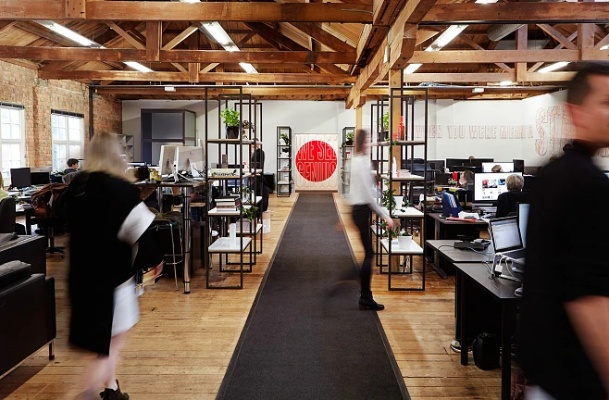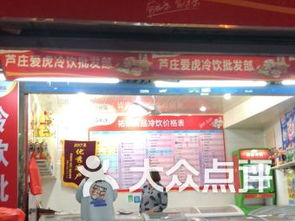The Impact of Textiles on Global Fashion and Economy
Introduction: Textiles, the fabrics woven from threads of natural or synthetic fibers, have been an integral part of human civilization for centuries. They are not only a source of comfort and warmth but also play a pivotal role in global fashion trends, economic growth, and social development. In this paper, we will explore the various aspects of textiles and their impact on society.
Impact of Textiles on Global Fashion: Textiles have revolutionized fashion by providing affordable options to consumers worldwide. They have enabled designers to create trendy and stylish clothing that cater to different cultural preferences and body types. For instance, the rise of sustainable and eco-friendly textiles has led to a shift towards ethical fashion practices. Many fashion brands are now incorporating recycled materials into their collections, promoting circularity and reducing waste.
In addition to their aesthetic appeal, textiles also contribute to cultural exchange and identity expression. Clothing is often associated with social status and identity, and textiles can reflect a person's culture, heritage, and values. For example, traditional garments like saris and kurtas are popular in many parts of the world, symbolizing Indian culture and heritage. Similarly, Western attire like jeans and T-shirts have become popular globally, representing American culture and lifestyle.

Impact of Textiles on Economic Growth: Textiles are a significant contributor to the global economy, accounting for a substantial portion of global trade. They are used in various industries, including apparel manufacturing, textile machinery manufacturing, and textile processing. Textiles are also essential for the construction industry, where they provide insulation and protection against weather conditions.
The textile industry employs millions of people worldwide, creating jobs in rural areas where traditional farming practices were replaced by textile production. This has helped to reduce poverty and improve living standards for many people. Additionally, the textile industry generates revenue for governments through taxes and tariffs.
However, the textile industry faces challenges such as low-value-added products, environmental pollution, and labor exploitation. To address these issues, many countries are investing in developing new technologies, improving productivity, and promoting sustainable practices.
Case Study: One example of the impact of textiles on global fashion is the rise of fast fashion. Fast fashion refers to the practice of producing high-quality clothing in small batches and selling them quickly to customers. This model has gained popularity in recent years due to its affordability and convenience. However, it has also been criticized for its negative impact on the environment and labor conditions.
To address these concerns, several organizations have emerged in recent years to promote sustainable fashion practices. For example, the Slow Fashion Collective aims to reduce the environmental impact of fashion by promoting the use of eco-friendly materials and reducing waste. Another organization, Fair Trade International, works to ensure fair labor practices in the textile industry by monitoring companies and advocating for better working conditions.
Conclusion: In conclusion, textiles have had a significant impact on global fashion and economic growth. They have provided affordable options for consumers, promoted cultural exchange and identity expression, and created jobs in rural areas. However, the textile industry also faces challenges such as low-value-added products, environmental pollution, and labor exploitation. To address these issues, it is important for stakeholders to work together to promote sustainable practices and ensure fair labor conditions. By doing so, we can continue to enjoy the benefits of textiles while minimizing their negative impact on our planet.
随着科技的飞速发展,纺织品行业也在不断进步与创新,本文旨在探讨纺织品在现代社会中的应用及其研究现状,并通过案例分析进一步阐述纺织品在实践中的应用效果,本文将采用英文口语化的表达方式,结合图表和数据,力求全面、深入地展示纺织品的研究成果。
纺织品在现代社会中的应用
-
服装制造业:纺织品在服装制造业中扮演着至关重要的角色,从面料选择到款式设计,再到生产流程控制,纺织品的应用为服装制造业带来了革命性的变化。
-
家居装饰:纺织品在家居装饰领域的应用日益广泛,从窗帘、地毯到床上用品,纺织品为家居环境增添了美观与舒适感。

-
功能性纺织品:随着人们对舒适度与健康需求的提高,功能性纺织品逐渐成为市场的新热点,这些纺织品具有多种功能,如抗菌、防紫外线、吸湿排汗等,满足了现代消费者的多样化需求。
纺织品研究现状
近年来,纺织品研究领域取得了许多重要成果,新型纤维材料的开发与应用,使得纺织品更加环保、耐用;智能纺织品的出现,为纺织品带来了更多的智能化功能,纺织品在可持续发展、绿色制造等方面也得到了越来越多的关注。
案例分析
以某知名品牌为例,该品牌在纺织品研发方面取得了显著成果,该品牌采用新型纤维材料,开发出了一系列具有高舒适度、高透气性的纺织品,这些纺织品不仅具有良好的外观效果,还具有优良的吸湿排汗性能,能够满足现代消费者的多样化需求,该品牌还注重环保理念,采用可持续材料和技术,为消费者提供更加健康、环保的纺织品。
纺织品实践应用效果
-
提高舒适度:新型纺织品的出现,使得纺织品更加舒适、透气,能够为消费者提供更加优质的穿着体验。
-
增强功能性:随着人们对健康需求的提高,功能性纺织品的出现,使得纺织品具有更多的智能化功能,能够满足消费者的多样化需求。
-
提升品牌形象:通过不断创新和研发,该品牌在市场上树立了良好的品牌形象,赢得了消费者的信任和喜爱。
纺织品在现代社会中的应用越来越广泛,其研究领域也在不断拓展和创新,通过案例分析可以看出,纺织品在实践中的应用效果越来越显著,纺织品行业将继续发展壮大,为人们带来更加优质、舒适、环保的纺织品产品,纺织品行业也需要不断创新和研发,以满足人们不断增长的需求。
Articles related to the knowledge points of this article:
The Story of Xian Xinyucheng Mengrou Textile Wholesale Shop
Textiles Water Resistance Evaluation Checklist
Exploring the Rich Tapestry of Nontong Xinmei Yang Textiles



